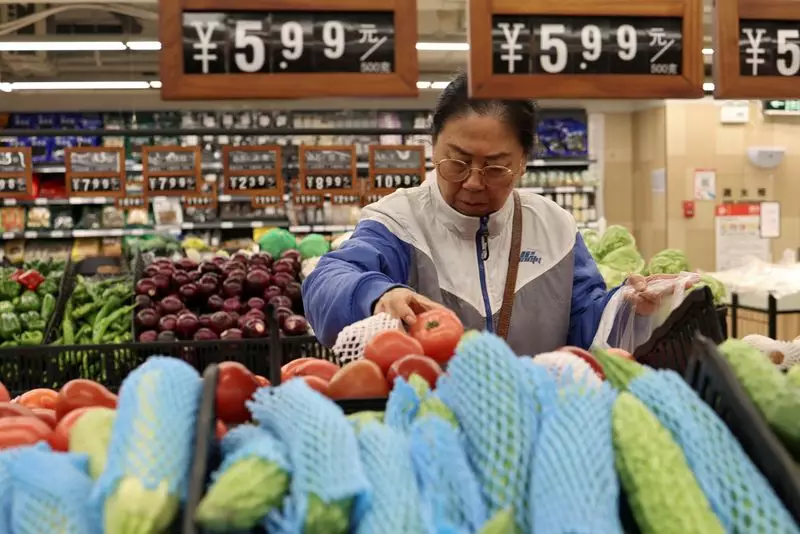As we move into the fourth quarter of 2023, China’s economic growth appears to be losing steam, raising concerns about the nation’s capacity to reach its growth targets. Recent data forecasts a modest growth rate of 4.5% year-on-year for the third quarter, a subtle decline from the 4.7% recorded in the previous quarter. This deceleration marks the slowest pace of growth since the beginning of 2023, indicating persistent headwinds that may challenge policy makers in stimulating robust economic performance.
Reports suggest that the slowdown is largely fueled by a prolonged downturn in the property sector coupled with weak consumer spending. These factors not only diminish economic confidence but also complicate the goals set by Beijing, which aims to achieve an economic growth target of approximately 5% for the year 2024. Thus, it is incumbent upon the Chinese government to consider additional stimulus measures to inject vitality back into the economy.
In response to the current economic landscape, Chinese officials are increasingly looking to implement fiscal stimulus measures aimed at revitalizing growth. Preliminary insights from a Reuters poll indicate that growth could reach a mere 4.8% in 2024, and potentially decline further to 4.5% in 2025. Such projections could spell trouble for the government, as they fall short of the ambitious targets that have been set in recent years.
China’s traditional reliance on infrastructure and manufacturing investments has begun to shift, with a growing emphasis on fostering domestic consumption instead. However, market participants are eagerly anticipating further details about a proposed fiscal stimulus package to understand how it will be executed. The looming question remains: will these measures be sufficient to stimulate demand and invigorate consumer spending in a market fraught with uncertainty?
As the economic landscape unfolds, some data points indicate a mixed performance. While growth in industrial production is still somewhat robust, it has outpaced domestic consumption, resulting in heightened risks of deflation. Given the stagnant property market and the increasing burden of local government debt, the overall economic environment finds itself at a precarious juncture.
The forecasted quarterly growth for the third quarter stands at an anticipated 1.0%, up from 0.7% in the preceding quarter. However, simultaneously released data on September’s economic activities reflects both glimmers of hope and alarming caution. Retail sales have shown signs of improvement, yet investment trends indicate a slowing momentum, underscoring the fragility of the current recovery.
China’s trade sector represents another challenge, as reports highlight a significant decline in export growth during September. The country’s capacity to maintain its status as a manufacturing powerhouse is under threat, especially as foreign trade curbs are expected to weigh heavily on future performance. Notably, manufacturers are reportedly cutting prices to move excess inventory, an alarming indicator of weakening demand.
These trade challenges coincide with unexpected easing in consumer inflation, alongside deepening producer price deflation. These dynamics elevate pressure on policymakers, compelling them to formulate proactive strategies to stimulate demand amid a backdrop of declining exports and an uncertain global economic landscape.
In response to these challenges, the Chinese Finance Minister has signaled intentions to considerably boost government debt as a means of stimulating growth. Reports indicate that China may issue special treasury bonds amounting to 6 trillion yuan, equating to approximately $842.60 billion, over the next three years, aimed specifically at reviving the economy through expanded fiscal stimulus.
Meanwhile, the People’s Bank of China also convened in late September to announce a series of aggressive monetary support initiatives, marking the most robust interventions since the onset of the COVID-19 pandemic. Analysts anticipate future cuts to key interest rates and reserve ratio requirements, which may further evolve as the economic climate unfolds.
In summation, China’s economic trajectory showcases a landscape fraught with both challenges and opportunities. Policymakers are at a crossroads as they strive to stimulate growth amidst a complex interplay of domestic and external pressures. Whether through enhanced fiscal measures or focused monetary interventions, the effectiveness of their strategies will ultimately determine the economic future of the world’s second-largest economy. The forthcoming quarters will be pivotal in assessing how these actions will shape not only domestic growth but also China’s role on the global economic stage.

